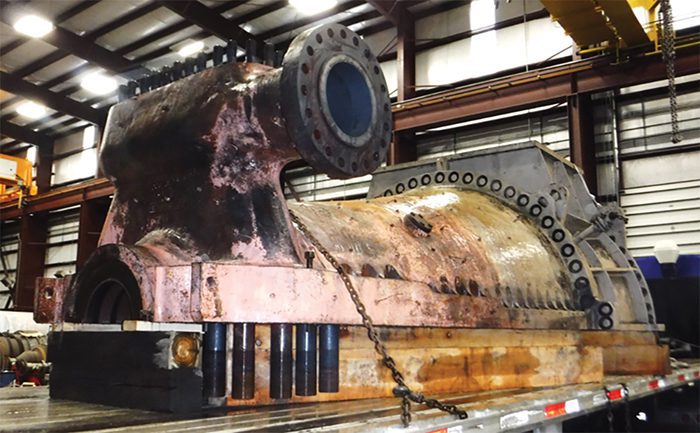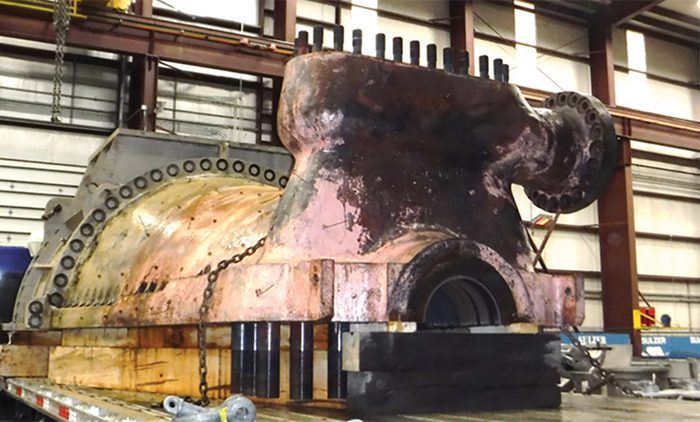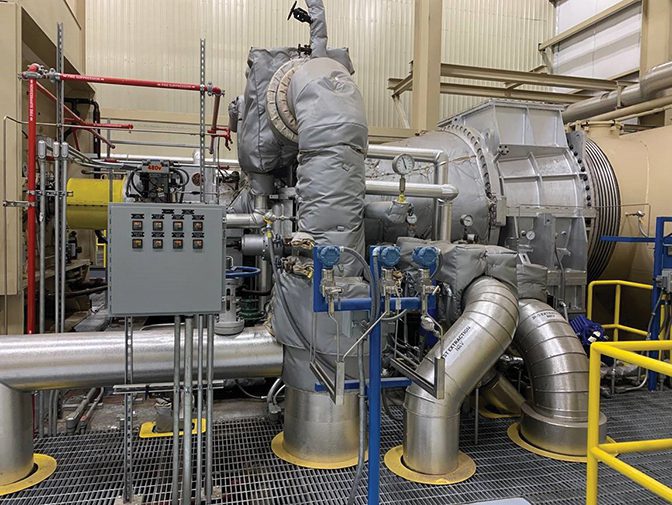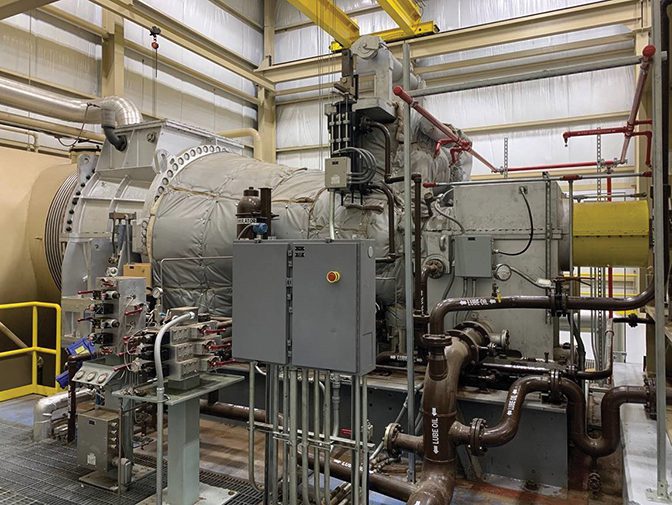Power stations work under a contract to deliver energy to the grid, which is dependent on a consistent supply to ensure the local population and businesses can have a reliable supply of electricity. Short, planned outages can be covered by reserve capacity, but losing a power station for an extended period can put exceptional pressure on the network.
Regular equipment checks are important to ensure reliability, especially for essential machinery such as steam turbines. Unfortunately for a site in Michigan—a 40-MW biomass-fired power plant—several critical components and systems did not function as they should have, resulting in a catastrophic failure of the steam turbine.
The damage at the biomass plant was extensive, and included the generator as well as several pieces of auxiliary equipment. Without these assets functioning properly, there was no way for the company to meet its obligations to supply the grid.
Sourcing a replacement steam turbine at short notice can be a considerable challenge, but when there is a need for a matching generator and all the auxiliary equipment as well, the task seems almost impossible. The power station needed to be fixed, and back up and running at the earliest opportunity. However, the time to repair the damage and commission a new steam turbine would be measured in years, so an alternative solution was needed.
 |
|
1. This photo shows the mothballed steam turbine casing as it was received by the Sulzer team, prior to an overhaul of the equipment. Courtesy: Sulzer |
Fortunately for the Michigan facility, an almost identical power plant with the same turbine, generator, and supporting equipment had been mothballed (Figure 1) six months earlier. Since fixing the biomass plant called for a complete dismantling of the power train, with an overhaul and relocation of the biomass generator, having that equipment available would shorten the timeline. Sulzer—a global company that provides a variety of services for the power generation industry—was able to refurbish and relocate all the machinery, jump-starting the project.
Assessing the Equipment
The mothballed equipment was located in Maine, and had been installed in 1994. The last major inspection of the turbine was 10 years before the site was closed, so any inspection would have to be a complete nut-and-bolt disassembly. This would include cleaning, non-destructive testing (NDT), and dimensional inspection, as well as a full refurbishment of the generator.
Having agreed to purchase all the necessary equipment, the company operating the biomass plant needed support in moving, installing, and commissioning the equipment. There would have been a two-year wait for a new turbine for the plant; in this case, Sulzer was able to complete the project in just eight months.
“Considering the turbine had run for 25 years, it was in very good condition; it had clearly been well operated and maintained,” Sulzer’s project manager said. “However, in this project, we would face some major time pressures since the deadline was as soon as possible.”
Logistics Management
The multi-phase project was kicked off in January, in the middle of winter when weather could complicate the project. Sulzer’s engineers went to the mothballed site in a remote part of Maine. Two weeks were spent onsite by the field service team, which removed the equipment from the second story of the plant. It was then transported to various locations for detailed inspections and overhaul.
 |
|
2. Each half of the turbine casing weighed 37,500 pounds, or nearly 19 tons. Courtesy: Sulzer |
The logistics were complicated by the sheer size of the equipment. The turbine rotor weighed 21,000 pounds; the casing (Figure 2) came in at 75,000 pounds. The generator rotor weighed 35,000 pounds, with the stator at 103,000 pounds. Sulzer moved the equipment in nine truckloads, including oversized trailers.
The generator went to a specialist in New York state where the rotor and stator were overhauled. Meanwhile, the steam turbine and its associated components went to Sulzer’s facility in Houston, Texas. Having completed all of the inspections and established the work required to return the equipment to full working order, the customer issued instructions to proceed as quickly as possible.
Specialist Installation
In Houston, the steam turbine had two complete rows of blades replaced, and the white metal bearings were resurfaced along with all the other refurbishments that were required. Once complete, Sulzer reassembled the turbine in Houston (Figure 3) under a controlled environment with all the necessary tools and equipment, rather than assembling it on the power station’s site. This was more cost-effective for the customer and minimized the overall timeframe for the project.
 |
|
3. The Sulzer team refurbished the steam turbine, replacing two complete rows of blades. The white metal bearings were resurfaced, and other refurbishments were made. The turbine was reassembled in Houston; here it is ready to be shipped to the power plant in Michigan. Courtesy: Sulzer |
The complete steam turbine weighed more than 96,000 pounds (Figure 4), which required special transportation arrangements and would take a week to ship to the biomass site in Michigan. In addition, the size of the components required specialist lifting equipment to be arranged ahead of time for the installation process, part of several steps required to maintain the project timetable.
 |
|
4. The complete steam turbine assembly weighed about 96,000 pounds; it required special transportation arrangements—and a week’s time—to move from Texas to Michigan. Courtesy: Sulzer |
“The greatest challenge in this project was the schedule,” the project manager said. “The scale of the assignment and the amount of work needed to get all the equipment back to peak condition was immense. We coordinated and managed the whole process to ensure the power plant was back up and running as soon as possible.”
 |
|
5. The refurbished steam turbine was installed and commissioned by Sulzer at the biomass station in Michigan, with the project completed about 8 months after it began. Courtesy: Sulzer |
Sulzer workers installed and commissioned the refurbished steam turbine (Figure 5) at the Michigan site.
“This has been a huge undertaking, but together with Sulzer, we have achieved a remarkable comeback,” said Chase Shepherd, plant manager at the Michigan biomass power station. “From initial planning and removal to commissioning and startup support, thanks to their knowledge and expertise, the project has been completed quickly and cost-effectively.”
—Peter Alexander is a project manager with Sulzer, a company that provides a variety of services to industry, including the power generation sector.










